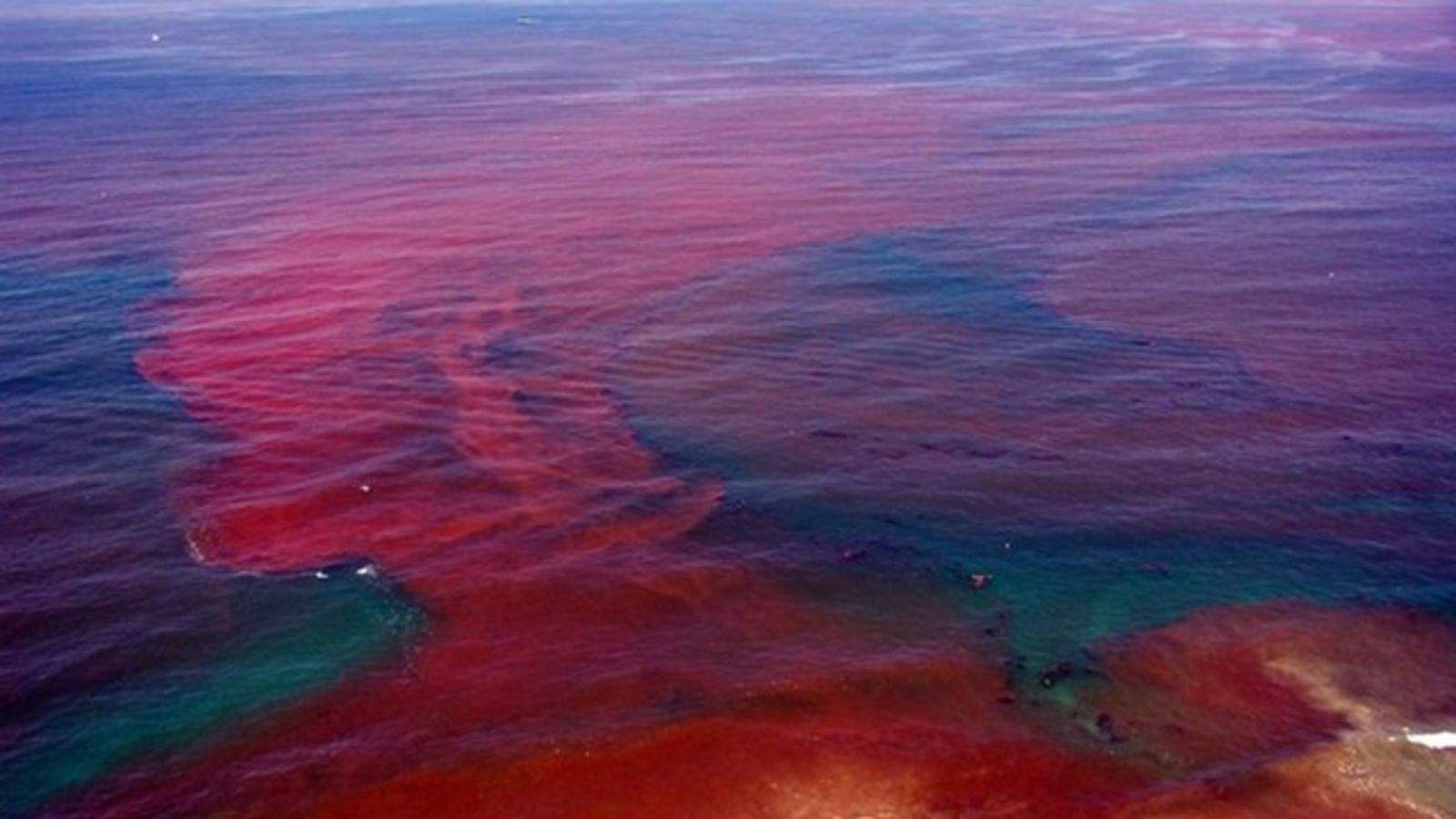Harmful Algal Blooms: A Growing Threat To California's Marine Wildlife

Table of Contents
H2: Types of Harmful Algal Blooms in California Waters
California's diverse coastal environment provides ideal conditions for various harmful algal species to thrive. Understanding the different types of HABs is crucial to effectively address the problem.
H3: Dinoflagellates and their Toxins
Dinoflagellates are single-celled organisms that can produce potent neurotoxins. Alexandrium catenella, for example, is responsible for paralytic shellfish poisoning (PSP). These toxins accumulate in shellfish, posing a significant risk to human health if consumed. In California, Alexandrium blooms are prevalent in areas such as Monterey Bay and the San Francisco Bay.
- Effects on Marine Species:
- PSP toxins can cause paralysis and death in marine mammals like sea otters and whales.
- Fish consuming toxic dinoflagellates can experience neurological damage and mortality.
- Seabirds that feed on contaminated fish or shellfish can also suffer from PSP.
H3: Diatoms and Their Impact
While not all diatoms are harmful, certain species can contribute significantly to HABs. Their rapid growth can lead to hypoxia, a depletion of dissolved oxygen in the water. This oxygen depletion creates "dead zones," areas where marine life cannot survive due to lack of oxygen.
- Effects of Hypoxia:
- Fish and invertebrates suffocate in hypoxic waters.
- Benthic communities (organisms living on the seafloor) are severely impacted.
- The entire marine food web is disrupted.
H3: Other Algal Species and Their Effects
Other algal species, such as Pseudo-nitzschia (producing domoic acid, causing amnesic shellfish poisoning), also contribute to HABs in California, each with its unique set of harmful effects on the ecosystem. Monitoring for a variety of species is crucial for comprehensive HAB management.
H2: The Devastating Impact on California's Marine Wildlife
The consequences of HABs on California's marine wildlife are severe and far-reaching.
H3: Impacts on Marine Mammals
Marine mammals are particularly vulnerable to HAB toxins. Sea otters, with their high metabolic rates and dependence on shellfish, are highly susceptible to PSP. Whales and dolphins can also experience neurological symptoms and mortality following exposure to HAB toxins.
-
Symptoms of HAB Toxin Exposure:
- Neurological disorders (e.g., paralysis, seizures)
- Respiratory distress
- Gastrointestinal problems
- Mortality
-
Long-Term Consequences: HAB events can significantly impact marine mammal populations, reducing their numbers and hindering their recovery from other threats.
H3: Impacts on Fish and Invertebrates
HABs directly impact fish populations through toxicity, and indirectly through hypoxia. Shellfish, crucial to the food web and California's economy, are directly affected, leading to shellfish bed closures and economic losses.
- Economic and Ecological Implications: The closure of fisheries due to HABs has significant economic consequences for fishing communities and businesses. The disruption of the food web has cascading effects on other species.
H3: Impacts on Seabirds
Seabirds are indirectly affected as they consume contaminated fish and invertebrates. This can result in illness, reproductive failure, and mortality.
H2: Monitoring and Mitigation Strategies for Harmful Algal Blooms
Addressing the harmful algal bloom problem requires a multi-pronged approach involving monitoring, research, and public awareness.
H3: Current Monitoring Programs
Several agencies in California, including the California Department of Fish and Wildlife (CDFW) and the National Oceanic and Atmospheric Administration (NOAA), actively monitor HABs.
- Methods for HAB Detection: These agencies employ various methods including satellite imagery, water sampling, and toxin analysis to detect and track HAB events.
H3: Research and Technological Advancements
Ongoing research focuses on improving HAB prediction models, understanding the factors that trigger blooms, and developing effective control methods.
- Technological Innovations: Advanced technologies, such as automated monitoring systems and improved toxin detection methods, are being developed to enhance HAB monitoring and management.
H3: Public Health and Safety Measures
Public health agencies play a vital role in warning the public about HAB events and advising on safety precautions, such as avoiding shellfish harvesting during bloom periods.
- Importance of Public Awareness: Educating the public about the risks associated with HABs is crucial for protecting human health and the environment.
3. Conclusion
Harmful algal blooms pose a significant and escalating threat to California's marine ecosystems. The various types of HABs, including those caused by dinoflagellates and diatoms, have devastating impacts on marine mammals, fish, invertebrates, and seabirds. Current monitoring programs and research efforts are vital, but combating harmful algal blooms requires continued investment in research, technological advancements, and public awareness. We urge readers to learn more about HABs, support research initiatives, and participate in citizen science programs to help protect California's precious marine resources. Understanding harmful algal blooms is the first step towards preventing future disasters and ensuring the health of our coastal environment.

Featured Posts
-
 Why Current Stock Market Valuations Are Not A Cause For Investor Alarm Bof A
May 30, 2025
Why Current Stock Market Valuations Are Not A Cause For Investor Alarm Bof A
May 30, 2025 -
 Measles Outbreak Alert Virus Found In Sacramento County Wastewater
May 30, 2025
Measles Outbreak Alert Virus Found In Sacramento County Wastewater
May 30, 2025 -
 March Rains Fail To Fully Address Water Shortage
May 30, 2025
March Rains Fail To Fully Address Water Shortage
May 30, 2025 -
 Unreleased Selena Gomez Song Poised To Become Her Next Top 10 Hit
May 30, 2025
Unreleased Selena Gomez Song Poised To Become Her Next Top 10 Hit
May 30, 2025 -
 Gorillazs 25th Anniversary House Of Kong Exhibition And London Shows Announced
May 30, 2025
Gorillazs 25th Anniversary House Of Kong Exhibition And London Shows Announced
May 30, 2025
